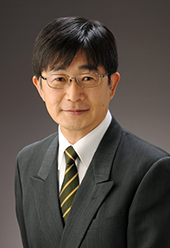
Profile
- B.S., Information Engineering, Nagoya Institute of Technology
- Tottori University, Graduate School of Engineering, Doctoral Course (Social Foundation Engineering Major), PhD (Engineering)
- Former Chief Executive Officer, Senior Software Process and Quality Professional, NEC Corporation
Responsible Subject
- Database Specific Lecture
- Project basic exercise
Field of Specialization
- Software Engineering
- Software Quality Assurance
- Software Engineering
- Computer System
Business Performance
Books and Articles
- Naomi Eida, Takashi Sato, Ryo Kurashita, Takeshi Mori, "Software Quality Judgment Method - Examination and Technique from Planning to Shipment Judgment," JUSE Press, pp. 41-107, Aug. 2019.
- AI Product Quality Assurance Consortium Automated Driving Technology Team, "AI Product Quality Assurance Guidelines (2019.05 version)," AI Product Quality Assurance Consortium (QA4AI Consortium), pp. 119-146, 2019 May.
- Takashi Sato, Nobuko Kotetsu, Katsuichi Tachibana, Tetsushi Shimomura, "Introduction Example of the Quantitative Management of the Scrum Method in Agile Development", Journal of the Reliability Society of Japan, Vol.41 No.1, pp.9-17, Jan. 2019
Paper
- T.Sato and S.Yamada, “Application of Software Factory to Advanced Software Quality Management”, Asia-Pacific Journal of Industrial Management, Vol. VI, Issue 1, pp.30-38, March 2017.
- Takashi Sato, Shigeru Yamada, "A Proposal for the Analysis of Software Quality Based on the QUALITY MAP System", Journal of Project Management Society, Vol.18, No.5, pp.35-40, October 2016
- T.Sato and S.Yamada, “Analysis of Process Factors Affecting Software Quality based on Design Review Record and Product Metrics”, International Journal of Reliability Quality and Safety Engineering, Vol.23, No.4, pp.1650011.1-1650011.11, July 2016.
- T.Sato and S.Yamada, “Qualitative Analysis of Process Factors Affecting Software Quality Based on Design Review Record”, Proceedings of the 9th Japan-Korea Software Management Symposium, pp.36-41, November 2016.
- T.Sato and S.Yamada, “Software Quality Management Based on Process and Product Metrics Analysis with Software Factory”, Proceedings of the 13th International Conference on Industrial Management (ICIM2016), pp.332-339, September 2016.
- Takashi Sato, Shigeru Yamada, "Qualitative Factor Analysis of Design Review Records Affecting Software Reliability", Proceedings of the Project Management Society of Japan 2016 Fall Research Conference, pp. 189-194, September 2016.
- T.Sato and S.Yamada, “Qualitative Quality Analysis of Process Factors Based on Software Design Review Record Affecting Software Reliability”, Proceedings of the 22nd ISSAT International Conference on Reliability and Quality in Design (ISSAT/RQD2016), pp.117-121, August 2016.
- T.Sato and S.Yamada, “Software Quality Analysis Practice and Verification based on QUALITY MAP System”, Proceedings of the 9th International Conference on Project Management (ProMAC2015), pp.380-386, October 2015.
- T.Sato, “Quality Improvement Practice and Software Quality Analysis based on the QUALITY MAP System”, Proceedings of the 8th Japan-Korea Software Management Symposium -Trends in Management Technologies and Human Resource Development-, Keynote-Speech, pp.7-20, November 2015.
- Takashi Sato, Shigeru Yamada, "A Proposal for the Analysis of Software Quality Based on the QUALITY MAP System", Proceedings of the 2015 Autumn Meeting of the Project Management Society of Japan, pp.487-492, October 2015
- Takashi Sato, "Efforts to Improve Software Quality at NEC," Proc. of The Union of Japanese Scientists and Engineers (JUSE) Quality Forum 2014, pp. 76-81, Nov. 2014.
- T.Sato, “Quality Improvement using the QUALITY MAP Technique”, Proceedings of the 6th World Congress for Software Quality(6WCSQ), CD-R, 12pp., July 2013.
- T.Sato, T.Mano and T.Takasu, “Comprehensive Evaluation for Quality, Productivity, and Delivery of Software Development Products”, Proceedings of the 1st World Congress for Software Quality(1WCSQ), 10pp., July 1995
Academic Societies
Information Processing Society of Japan (IPSJ), Project Management Society of Japan (PMSSJ), Japanese Society for Quality Control (JSQC), Japanese Society for Reliability Studies (JSR) (Editorial Board Member)
Joint activities by academia, industry, and government
- Member of OSS Evaluation Methodology and OSS Utilization Guideline Study Group in Evaluation Model Working Group, International Standards Promotion Center, Information-technology Promotion Agency, Japan, 2010-2013;
- Steering Committee Member of the AI Product Quality Assurance Consortium and former Team Leader of the Automated Driving Technology Team
- Planning Committee Member,The Union of Japanese Scientists and Engineers (JUSE) SQiP Software Quality Assurance Manager's Group, 2009-